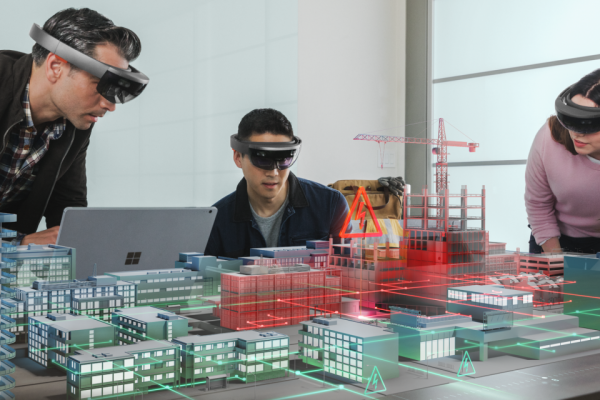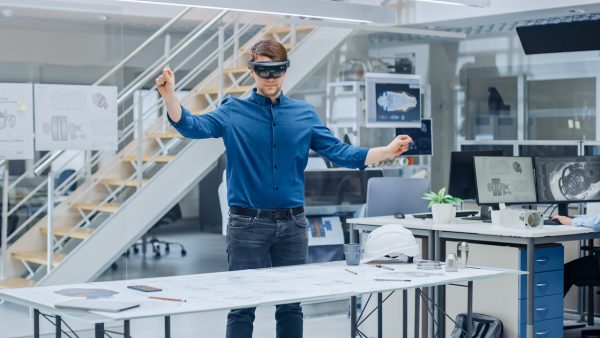2019 Trends In The AR Sector
The foremost industries that have adopted augmented reality (AR) technology include engineering, manufacturing, electronics, automotive, aerospace, and other industries that deal in heavy physical gears. According to Artillery Research, by 2021 the worldwide market for AR applications will rise above 35.2 billion dollars. The drivers for this industry growth is the support for AR through its integration into business applications in different industries like training, logistics, assembly, product design, maintenance, and repair. Why the AR is such a captivating technology for a broad collection of industries is its capacity to overlay information which can come in form of text, digital characters, images, or illustrations above a real environment.
Augmented Reality Applications
Augmented reality adoption has a lot of use cases which is the result of its adoption across many industries, The technology adoption is some industries has grown to almost 20 percent of companies. Some industry applications of AR include the following.
Training
AR is being utilized to give step-by-step training to staff on safety precautions when handling tasks they aren’t familiar with. The U.S. Military, for instance, started investigating with a custom-made training version of the Microsoft HoloLens known as the HoloLens 2, and which is referred to as Integrated Visual Augmentation System (IVAS) in the military’s term.
Logistics
AR is equally utilized in the shipping and logistics to help their staffs to readily connect into a system that offers them immediate information about the location and history of an item and where it needs to be. Shipping and cargo company DHL is currently testing a mobile Augmented Reality system for logistic purposes.
Assembly
Assembly line processes involve speed and capacity to develop a large volume of product. This also comes with mistakes and flaws. Moreover, General Electric is applying AR technology to business settings like aviation, renewable energy, and healthcare to boost its efficiency, minimize mistakes on its production lines and reduce costs. Equally the producer of aircraft, Boeing utilizes Augmented Reality glasses that are powered by Upskill’s Skylight AR platform to direct its technicians while they carry-out the complicated wiring procedures on the airplanes.
Maintenance
AR processes allow professional technicians who work on the field easy access to equipment graphics and troubleshooting procedures while they work on-site.
R&D
With the use of virtual and augmented reality as an extension of CAD procedures, product developers can try-out many variations of a product and tweaks and adjust in a virtual format rather than having to manufacture physical models for every repetition. AR/VR procedure offers comprehensive visualizations during the early stage of the development of a product. This way, the product designers build virtual prototypes and test them in a real-world environment.
Commerce
Augmented reality is an innovative way of shopping. Mobile devices that support AR mean that the AR sector is presently occupied by strong and mature technologies. Developers, retailers, and customers are currently utilizing AU as part of their job experience.
Top 5 Augmented Reality Jobs
1. Computer vision engineer
Data from indeed reveal that there has been a growing demand for computer vision engineers since 2013, according to Indeed data. Computer vision engineers create and enhance computer vision and machine learning algorithms. They equally develop analytics to discover, group and trail products. Moreover, investments in AR initiatives are projected to increase from 11.4 billion in 2017 to 215 billion in 2021, as revealed by IDC.
2. Computer Network Architect
If you are saving anything on the cloud, you’re already are utilizing the product of a computer network architect. The work of these architects is to design, create and carry-out maintenance a range of variety of data communication networks, starting from big cloud infrastructures to small-sized intranets. Also, the average salary of Computer Network architects is 104,650 dollars. The professionals regularly hold a Bachelor’s degree.
3. Software Developer
Software developers ought to be imaginative, inventive, creative and technical to be able to perform well as an augmented reality software developer. They may need to invent new codes. Manage bugs in the codes to improve on it to make it function more effectively. Finally, the software developer’s average salary is 101,790 dollars. Also, these professionals need to possess a Bachelor’s degree.
4. Information Security Analyst
Information security analyst helps businesses to check cybersecurity issues and manage their online security concerns. The work of information security analysts includes designing and testing out security processes that protect a company’s computer networks and systems. The average salary range for the professionals is 95,510 dollars. Also, these professionals need to possess a bachelor’s degree.
5. IT Manager
IT managers would be required to spearhead the IT processes of enterprise’s and coordinate computer-related tasks for businesses. Also, they are responsible for the installation and maintenance of AR software, securing an office’s network and electronic documents being on the lookout for fresh technologies and opportunities to upgrade. The forecasted job growth is 44,200 while the average salary for an IT manager Job is 139,220 dollars. The professional equally need a bachelor’s degree to function effectively.
Final Thoughts On Augmented Reality Jobs In 2019
With the trend in the industry and the facts and figures including high demand for augmented reality developers, the time to jump into the industry and grab your opportunity is now.




